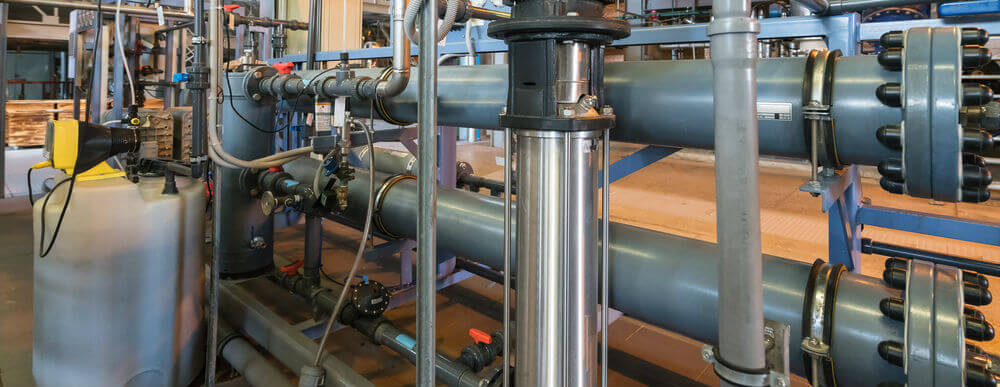How Do Air Dryers Work? – Membrane, Desiccant, and Refrigerated Dryers
July 27, 2020
Compressed air dryers are essential in a host of industrial facilities that require a regular supply of dry, compressed air. These dryers are critical in industrial operations because the presence of moisture in industrial air can damage pneumatic systems, cause freezing in pipelines, promote corrosion in metallic parts, etc.
A wide range of instrument air dryer types are available on the market today. Understanding the different types of air dryers and their principles of operation will let you choose the ideal compressed air dryer for your unique application.
What Is a Compressed Air Dryer?
A compressed air dryer is a piece of equipment designed to separate water vapor or moisture (de-humidify) from industrial process air. In the typical system, a compressor draws in humid air and compresses it, which raises the air temperature and then cooling the air condensing water vapor out of the unit.

However, there are other ways to achieve separation. The main types of air dryers include the refrigerated, desiccant-type, and membrane type air dryer.
Refrigerated Air Dryer Working Principle
Refrigerated air dryers are one of the most common types used in industrial applications due to their ease of maintenance and relative cost-effectiveness. They are suitable for air-drying applications without special requirements such as a minimum dew point.
The refrigerated air dryer working principle is based on de-humidifying air by rapidly cooling it, condensing it, and draining off the moisture. The operation is like that of a domestic refrigerator or home air-conditioning system.
Refrigerated air dryers de-humidify air through the following phases:
- Warm, moist air enters the dryer, which cools it rapidly to about 3°C (37.4°F) in a refrigeration unit. At this temperature, the water vapor in the air condenses into pure water, which collects in a water trap and fed into discharge lines. The warm, gaseous refrigerant is cooled and regenerated in a condenser.
- The dry air in the chamber is re-heated to room temperature and fed through an outlet.
Moreover, refrigerated air dryers are available in two variants – cycling and non-cycling.
- Cycling dryers are 100% duty cycle machines that can maintain the dew point at a constant temperature.
- Non-cycling dryers work by intermittently shutting down and restarting to maintain the required temperature.
Both variants are useful in different applications, although cycling types tend to ramp up maintenance costs.
Desiccant-type Air Dryer Working Principle
A desiccant air dryer system consists of two towers, one for drying the air and the other for regenerating the desiccant. The drying tower contains a porous desiccant material that inhibits water molecules as compressed air from the inlet passes over it.
A less common variant, the single tower desiccant air dryer, comprises a single tower containing a desiccant material that dries air coming in from the environment. Single-tower dryers also contain no mechanical parts and do not require electricity to operate. They are suitable for use in hazardous and corrosive environments.
These instrument air dryers use a desiccant material, hygroscopic substances that exhibit a high affinity for water as the de-humidification agent. These types of compressed air dryers achieve a low dew point, making them suitable for use in colder climates and industries that require super dry air.
There are three main types of desiccant dryer systems – heated, heatless, and heat of compression desiccant air dryers. Let’s take a closer look at these below.
Heated desiccant air dryer
Heated desiccant air dryers utilize a source of heating within the drying tower to heat the desiccant material sufficiently to minimize the need for purge air. Typical dew points in heated dryers range from -40°C to -73.3 °C (–40 to –100 °F).
Heatless regenerative desiccant air dryer
Heatless desiccant dryers do not contain a heated system in the regenerating tower; instead, they utilize “purge air” to expel moisture from the tower. Typical dew points in heatless dryers range from -40°C to -73.3 °C (–40 to –100 °F).
Heat of Compression
A heat of compression air dryer uses both towers simultaneously to maintain a uniform temperature. This design allows for lower operating costs but with a less consistent dew point.
Membrane Air Dryer Working Principle
Membrane dryers use permeable membranes similar to nitrogen separation membranes or CO2 separation membranes to extract water vapor from process air. These systems are convenient to use, more cost-effective, and require less maintenance since they have no moving parts. They are suitable for low volume air separation.
GENERON Has Air Drying Solutions for Diverse Applications
GENERON is a world-class manufacturer of compressed air systems. We have over 50 years of experience providing a full range of air-drying solutions to the commercial, industrial, and environmental facilities worldwide.
Contact us online today for more information on our compressed air dryer solutions or to request a quote.
